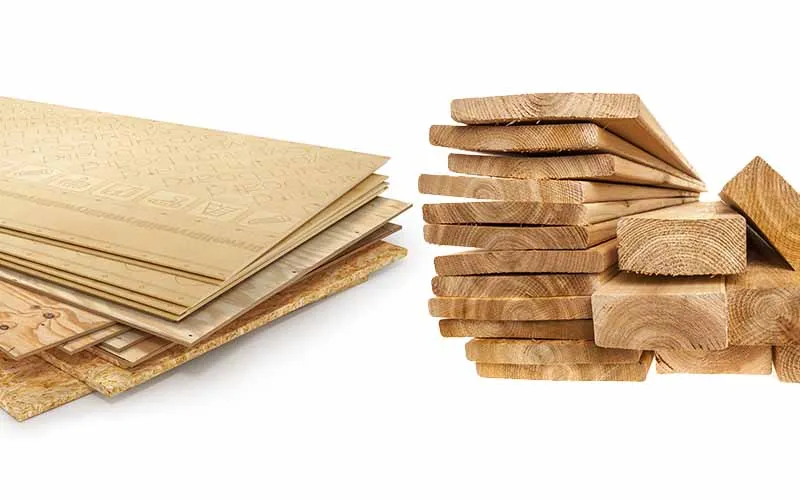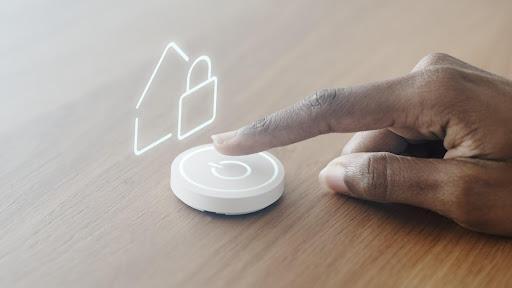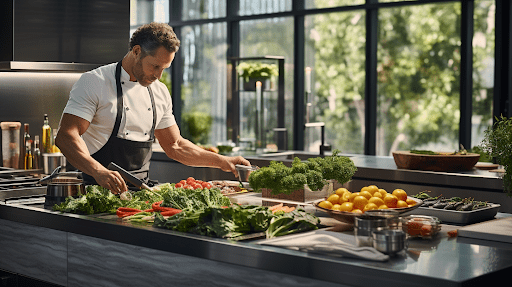
When buying handcrafted, heirloom quality solid wood furniture, it may come as a surprise to see plywood inside. It’s used to handle solid wood’s movement and prevent it from cracking, twisting, bending, and warping.
Plywood has an attractive appearance and is easy to work with. It is also lighter to transport than solid wood.
Strength
Plywood is one of the strongest building materials on the market. It is made up of layers of wood grain and wood chips that are placed perpendicular to each other and bonded with glue under high pressure in the manufacturing process. Alternating the direction of the grain in each layer gives the material strength in multiple directions, making it much stronger than solid wood.
Plywood also has a high level of flexibility, which makes it easier to work with than solid wood. This flexibility allows it to bend and curve more easily than other types of wood, which can help with a variety of projects. Plywood is also resistant to chemicals, which means that it can be used in places where it might be exposed to toxic chemicals.
The thickness of plywood flooring determines its strength, but many other factors also affect its strength. For example, the type of wood that is used to make veneers can have a significant impact on its strength. In addition, the type of adhesive that is used to bond the wood can have an effect on its durability. Plywood that is treated with preservatives will be more durable than untreated plywood.
Another factor that can have an impact on the strength of plywood is its shear strength. This quality is important because it prevents the veneers from cracking or breaking under stress. Shear strength is also important for the structural integrity of plywood, and it is a critical consideration when choosing which type of plywood to use for a project.
All types of plywood have varying levels of strength, but the highest quality plywood is created with at least four layers and is three-quarters of an inch thick. The outer areas of the panel are known as the back and the face, while the inner layer is called the core. If there are five or more inner layers, the additional layers are referred to as cross bands.
The strength of a plywood panel is determined by its thickness, species, and the glue that is used to bond the layers together. Hardwood and softwood are two of the main categories of plywood, but hundreds of different tree species fall under these classifications. Generally, hardwood plywood is stronger than softwood, but there are exceptions. For instance, balsa trees are softer and weaker than most other hardwoods but can make very strong plywood.
Durability
Plywood is a strong material that is resistant to bending, breaking, splitting, warping, and twisting. It is also moisture-resistant, making it ideal for outdoor use. This is due to the fact that its alternating grain patterns prevent it from absorbing or emitting moisture. It is also treated with preservatives to ensure that it can withstand harsh chemicals. This is why it is often used in the construction industry.
Plywood can be cut and shaped easily, allowing it to be fabricated into different shapes. It is also easier to work with than solid wood because its smooth surface accepts paints and other finishing products well. This makes it an ideal choice for projects that require a great deal of flexibility.
The durability of plywood is a result of the various processes that go into its production. The veneers are carefully chosen and glued together with the help of high-grade adhesives. These are based on different types of timber species, such as melamine, urea-formaldehyde, and phenolic. The glue is a plastic resin that imbues the material with desirable properties such as strength, reliability, and resistance to water. This is why it is preferred to other conventional woodworking glues.
The different woods used to make plywood are sourced from around the world. These include spruce, pine, and Douglas fir. The most commonly used plywood is made from these three types of wood. However, there are many other varieties of plywood that are available in the market. Some of these are sourced from exotic hardwoods.
Another advantage of using plywood is that it is more durable than solid wood, which means that it will last longer in tough conditions. It also resists fire better than some other materials, such as solid oak and ash. It also possesses good thermal and acoustic insulation, which can help to reduce heating and cooling costs. These characteristics make it a great material for all kinds of uses in homes and offices. Whether building a house or designing an office, plywood is the best material for all your needs.
Aesthetics
Plywood can be used for a number of different purposes. It can be glued together to create walls, floors, or ceilings or used as a formwork for concrete. It can also be cut to size and shaped for a specific application. This makes it easy to work with, and there is less chance of mistakes or gaps in the finished product. This is particularly important when working on a large construction project.
Plywood is an environmentally friendly alternative to more conventional building materials such as bricks or natural wood. Its flexibility and strength mean that it can be used for a wide range of projects, making it an ideal choice for large construction projects. Furthermore, the fact that it is made from a renewable resource reduces its impact on the environment. It is also cheaper than traditional materials such as bricks or natural wood.
There are several types of plywood available on the market today. Some are made from softwoods such as redwood and cedar, while others are made from hardwoods such as maple and oak. Some are coated in resin or vinyl to make them more attractive. Plywood is also easier to work with than solid wood, allowing it to be bent into curves and shapes.
The quality of plywood is determined by the type of veneers used and how they are bonded together. It can also be influenced by the type of adhesive used and how it is applied to the surface of the plywood. Some types of plywood are treated with chemicals to increase their resistance to moisture, which is particularly useful for exterior use.
Unlike solid wood, which has to be sanded to produce an even finish, plywood can be easily smoothed to create a high-quality surface for painting or staining. It is also much lighter and easier to transport than other building materials, which is especially beneficial for large construction projects.
In addition to its many practical uses, plywood is a beautiful material for interior design and furniture. It can be carved and shaped to create unique designs, and it is easy to paint or stain to suit any color scheme. It is also popular for craftspeople, as it can be cut to precise dimensions and shaped to fit specific needs. Its lightweight, durable nature also makes it ideal for boat and aircraft construction.
Cost
Plywood is a versatile material that is used for many different projects. It has a high strength-to-weight ratio and is available in various grades, depending on the intended use. Choosing the right plywood is important to ensure that your project is safe and durable. While this material has many benefits, it is also more expensive than solid wood. The cost of plywood varies, so it is important to consider the type and grade required for your project. Finding plywood that fits your budget is possible by consulting local suppliers and comparing prices.
Unlike solid wood, which is harvested directly from trees, plywood is made of thin layers or “plies” of glued veneers. During the manufacturing process, the adjacent veneers have their wood grains rotated at 90 degrees to each other. This helps reduce splitting when nailed or hammered and increases stability. The layered structure of plywood also increases its tensile strength by distributing the force over a larger surface area instead of concentrating it in one spot.
In addition to these structural characteristics, plywood can also be treated to improve its resistance to chemical exposure. The treatment will increase its resistance to corrosion, weathering, and rot. In addition, it will help prevent the growth of mold and mildew. Plywood can also be glued with different types of glues. The most common is urea formaldehyde, which is an adhesive that is both strong and moisture-resistant. However, it is important to note that urea formaldehyde has some harmful side effects and should only be used in a well-ventilated area.
Softwood plywood is typically made from spruce, pine, or fir. This type of plywood is often used in furniture, construction, and marine applications. It can also be made from cedar (Cedrus sp) and Douglas fir (Pseudotsuga menziesii). The grain of softwood plywood is more noticeable than that of hardwood plywood, but the two are similar in terms of strength.
In addition to these properties, plywood has excellent insulating qualities. It is used to insulate flooring, roofs, and walls in home construction and can reduce heating and cooling costs over time. It is also resistant to moisture and can be treated with preservatives to resist rot, insects, and mold.
RELATED ARTICLES
Latest Articles
 How Long To Soak Chia Seeds: A Simple GuideIn TipsFebruary 11, 2025Chia seeds are little round black seeds that have […]
How Long To Soak Chia Seeds: A Simple GuideIn TipsFebruary 11, 2025Chia seeds are little round black seeds that have […] How to Spot Fake Software Licenses and Avoid ScamsIn TechnologyFebruary 4, 2025Image Credit: pexels.com In today’s complex […]
How to Spot Fake Software Licenses and Avoid ScamsIn TechnologyFebruary 4, 2025Image Credit: pexels.com In today’s complex […] What Factors Should Businesses Consider When Choosing A SIP Trunk Provider?In TechnologyFebruary 1, 2025Under the conditions that are related to running a […]
What Factors Should Businesses Consider When Choosing A SIP Trunk Provider?In TechnologyFebruary 1, 2025Under the conditions that are related to running a […] Best ATV Rentals in Dubai for Unforgettable Desert SafarisIn TravelJanuary 29, 2025Image Credit: pexels.com Dubai is a city that offers […]
Best ATV Rentals in Dubai for Unforgettable Desert SafarisIn TravelJanuary 29, 2025Image Credit: pexels.com Dubai is a city that offers […] The Evolution of Paint Protection Film: Innovations You Need to KnowIn TechnologyJanuary 26, 2025Over the years, Paint Protection Film (PPF) has […]
The Evolution of Paint Protection Film: Innovations You Need to KnowIn TechnologyJanuary 26, 2025Over the years, Paint Protection Film (PPF) has […] Your Ultimate Guide to Local SEOIn MarketingJanuary 17, 2025Local SEO can be defined as optimization of the online […]
Your Ultimate Guide to Local SEOIn MarketingJanuary 17, 2025Local SEO can be defined as optimization of the online […] Top 5 Reasons Why the Organic Traffic Is Really Beneficial for BusinessesIn MarketingJanuary 16, 2025Many companies invest heavily in SEO, with the […]
Top 5 Reasons Why the Organic Traffic Is Really Beneficial for BusinessesIn MarketingJanuary 16, 2025Many companies invest heavily in SEO, with the […] Understanding the Power of Spreadsheet Software for Personal and Business UseIn TechnologyDecember 7, 2024In today’s data-driven world, spreadsheet […]
Understanding the Power of Spreadsheet Software for Personal and Business UseIn TechnologyDecember 7, 2024In today’s data-driven world, spreadsheet […] The Summer Learning Loss – 7 Key Aspects You Must Understand in 2025In TipsNovember 29, 2024Every year, students face summer learning loss during […]
The Summer Learning Loss – 7 Key Aspects You Must Understand in 2025In TipsNovember 29, 2024Every year, students face summer learning loss during […] Equity Trading in Global Markets: Key ConsiderationsIn TipsNovember 4, 2024How prepared are you to explore the possibilities that […]
Equity Trading in Global Markets: Key ConsiderationsIn TipsNovember 4, 2024How prepared are you to explore the possibilities that […] Crafting a Standout Resume and Networking Your Way to Jobs in CanadaIn TipsOctober 23, 2024When applying for jobs in Canada, the format of your […]
Crafting a Standout Resume and Networking Your Way to Jobs in CanadaIn TipsOctober 23, 2024When applying for jobs in Canada, the format of your […] How to invest in the future?In TechnologySeptember 27, 2024Who doesn’t want to build up some extra pension […]
How to invest in the future?In TechnologySeptember 27, 2024Who doesn’t want to build up some extra pension […]
stopie.com is a participant in the Amazon Services LLC Associates Program, an affiliate advertising program designed to provide a means for sites to earn advertising fees by advertising and linking to Amazon.com.
Clicking on an Amazon link from stopie.com does not increase the cost of any item you purchase.
We will only ever link to Amazon products that we think our visitors may be interested in and appreciate learning more about.



